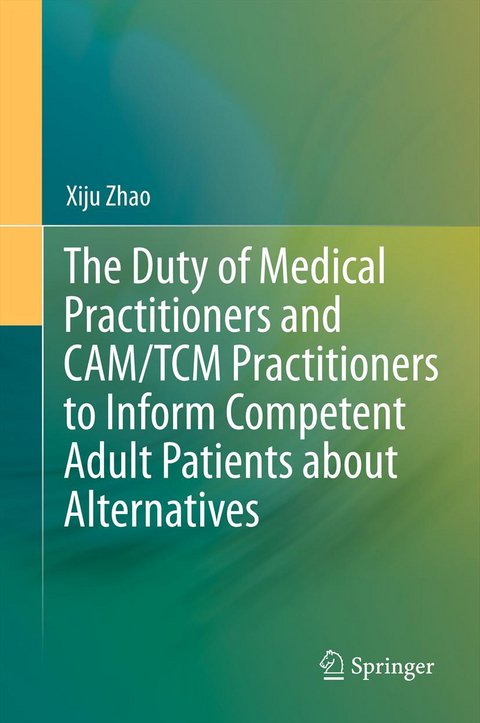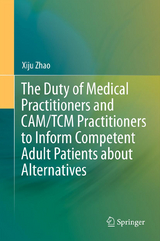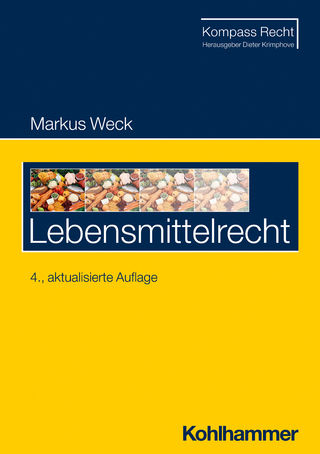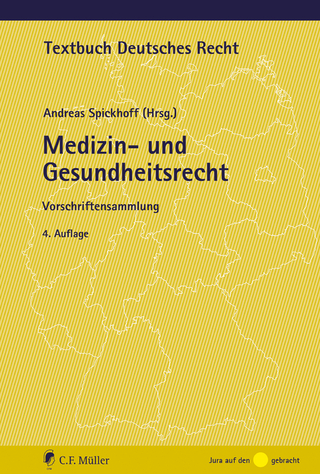The Duty of Medical Practitioners and CAM/TCM Practitioners to Inform Competent Adult Patients about Alternatives
Springer Berlin (Verlag)
978-3-642-31646-3 (ISBN)
The book pays interest to a small and almost untouched topic: a health practitioner' s duty to inform about alternatives. It covers both orthodox medicine practitioners and CAM practitioners. The topic is explored in a co mparative way, examining the laws of not only common law jurisdictions, such as the USA, England, Canada, Australia, New Zealand, but also two East Asia jurisdictions ( China and Japan ) . It uses the collective wisdom of several common law jurisdictions, but also differentiates them. It places the issue of "disclosure of alternatives" in a clear and wider context, making a cogent distinction between diagnosis/treatment and information disclosure.
1 INTRODUCTION.- 2 INFORMATION DISCLOSURE: A DISTINCTIVE PROFILE.- INTRODUCTION.- THE COMMONWEALTH APPROACH.- THE USA APPROACH.- THE MATERIALITY TEST.- MAKING HEALTH CARE DIVISIBLE.- The Doctor-oriented Standard v. The Patient-oriented Standard.- Medical Judgment v. Layperson Knowledge.- Information v. Materiality.- 3 DISCLOSURE OF ALTERNATIVES: IN A WIDE CONTEXT.- INTRODUCTION.- FROM DISCLOSURE OF RISKS TO DISCLOSURE OF ALTERNATIVES.- DISCLOSURE OF ALTERNATIVES: CONVENTIONAL WISDOM.- GENERAL DISTINCTION: SELECTION, RECOMMENDATION, PERFORMANCE V. DISCLOSURE.- FURTHER DISTINCTION: SELECTION - RECOMMENDATION - PERFORMANCE - DISCLOSURE.- Performance.- Selection.- Recommendation.- Disclosure and Doctors' Preferences.- CONCLUSION: A NEW MODEL.- 4 FILTERS AND CIRCUMSTANCES.- INTRODUCTION.- FILTERS.- Medical Knowledge.- The Particular Patient's Condition.- "Material" Information.- Information "Making a Difference".- CIRCUMSTANCES.- "Elective" Procedures.- "Experimental" Procedures.- Patients' Inquiry.- CONCLUSION.- 5 CATEGORISATION OF ALTERNATIVES.- INTRODUCTION.- CONVENTIONAL AND EMERGING TREATMENT OPTIONS.- LEGALLY UNAVAILABLE ALTERNATIVES.- FINANCIALLY UNAVAILABLE ALTERNATIVES.- GEOGRAPHICALLY UNAVAILABLE ALTERNATIVES.- ALTERNATIVE PROVIDER.- The USA Approach.- The Canadian Approach.- The Australian Law.- CAM ALTERNATIVES.- DOING NOTHING - AN OPTION?.- CONCLUSION.- 6 EMERGING TREATMENT OPTIONS.- INTRODUCTION.- "A SCHOOL OF THOUGHT" IN THE CONTEXT OF SELECTION OF TREATMENT OPTIONS.- ADOPTION OF EMERGING TREATMENT OPTIONS.- According Priority to Conventional Treatments.- Leeway in Adopting Emerging Treatment Options.- DISCLOSURE OF EMERGING TREATMENT OPTIONS.- Only More Promising Alternatives?.- Only More Mature Alternatives?.- CONCLUSION AND SUGGESTION.- 7 FINANCIALLY UNAVAILABLE TREATMENT OPTIONS.- INTRODUCTION.- PROVISION OF TREATMENTS: RESOURCE-CONSCIOUS?.- DISCLOSURE OF TREATMENT OPTIONS: RESOURCE-BLIND?.- Disutility?.- A Sensitive and Reactive Approach?.- Undermining Rationing?.- Time Resource.- CONCLUSION.- 8 CAM AND ALTERNATIVES.- 8.1 INTRODUCTION.- ORTHODOX MEDICINE PRACTITIONERS AND CAM.- Adoption of CAM.- Disclosure of CAM.- DUAL PRACTITIONERS.- Delivering CAMs.- Disclosure of Alternatives.- CAM PRACTITIONERS.- The Context of Diagnosis and Treatment: The "Same School" Rule?.- The Context of Information Disclosure: A Duty to Inform about Conventional Medicine Alternatives?.- A Canadian Case: A CAM Practitioner and the Duty of Care.- CONCLUSION.- 9 NEW ZEALAND CONTEXT AND BEYOND.- INTRODUCTION.- THE ENGLISH MODEL.- The Less Demanding Common Law.- The More Demanding Professional Regulation.- Law or Professional Regulation?.- THE AUSTRALIAN MODEL.- The Modestly Demanding Common Law and Legislation.- The More Demanding Professional Regulation.- THE CANADIAN MODEL.- The More Stringent Common Law.- The Similarly Stringent Legislation and Professional Regulation.- COMMON LAW, PROFESSIONAL REGULATION, LEGISLATION?.- NEW ZEALAND LAW AND ITS CODE OF PATIENTS' RIGHTS.- The Unique "Code".- Scope or Standard of Information Disclosure.- A "Materiality" Test?.- A Two-pronged Test?.- Disclosure of Options/Alternatives.- Options: "Available"?.- A Doctor's Recommendation and Preferences.- Minority Treatment Options.- Innovative Treatment Options.- The Opening Words of Right 6 (1) and Clause 3.- CAM, CONVENTIONAL MEDICINE AND DISCLOSURE OF ALTERNATIVES.- CAM Practitioners.- Dual Practitioners.- Conventional Medicine Practitioners.- Impression: Still Orthodoxy-reinforcing?.- CONCLUSION: THE CODE APPROACH AND THE TORT APPROACH.- 10 CHINESE CONTEXT.- INTRODUCTION.- LEGAL CONTEXT.- Chinese Medical Law.- Chinese Law of Liability for Medical Damage.- Chinese Informed Consent Law and the Duty to Disclose Alternatives.- Conclusion and Suggestion.- MEDICAL CONTEXT.- Chinese Health Care.- Traditional Chinese Medicine v. "Western" Medicine.- Dual and Integrative Medicine.- TRADITIONAL CHINESE MEDICINE AND THE LAW.- Integrative or Alternative Legal Framework?.- TCM Practitioners and Informed Consent Law.- Western Medicine, Chinese Medicine and Disclosure of Alternatives.- CONCLUSION.- 11 CONCLUSION
| Erscheint lt. Verlag | 26.9.2012 |
|---|---|
| Zusatzinfo | XII, 416 p. |
| Verlagsort | Berlin |
| Sprache | englisch |
| Maße | 155 x 235 mm |
| Gewicht | 770 g |
| Themenwelt | Recht / Steuern ► Privatrecht / Bürgerliches Recht ► Medizinrecht |
| Schlagworte | Alternatives • China; Recht • Chinese Law • Chinesische Medizin • Common Law • Gesundheitsberufe • Health Practitioners • Information Disclosure • Informationspflicht • Patienteneinwilligung |
| ISBN-10 | 3-642-31646-8 / 3642316468 |
| ISBN-13 | 978-3-642-31646-3 / 9783642316463 |
| Zustand | Neuware |
| Haben Sie eine Frage zum Produkt? |
aus dem Bereich




